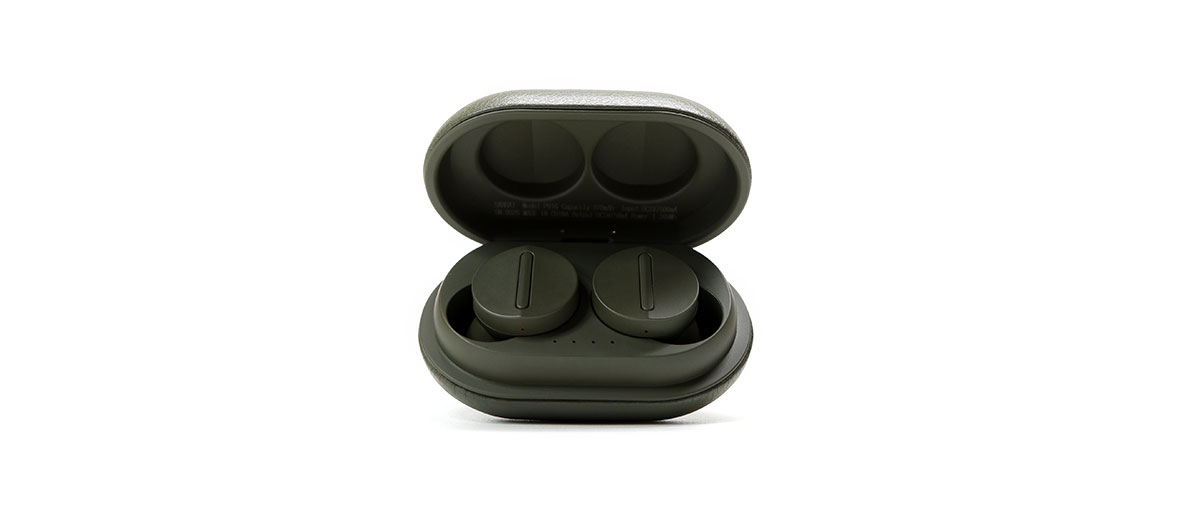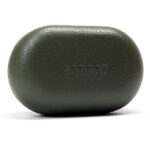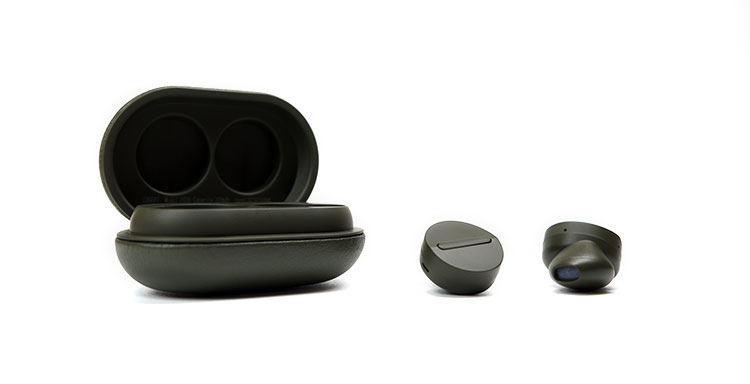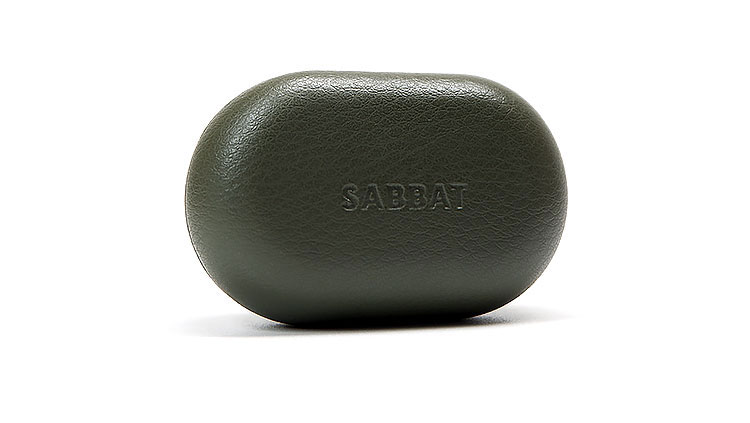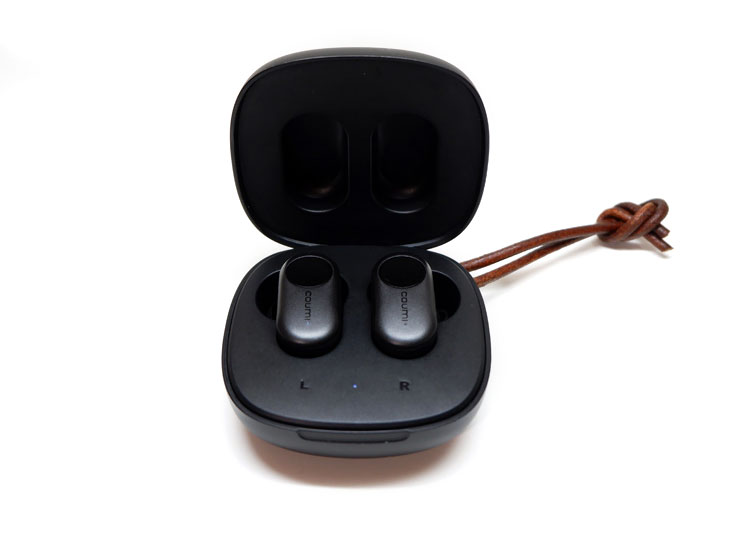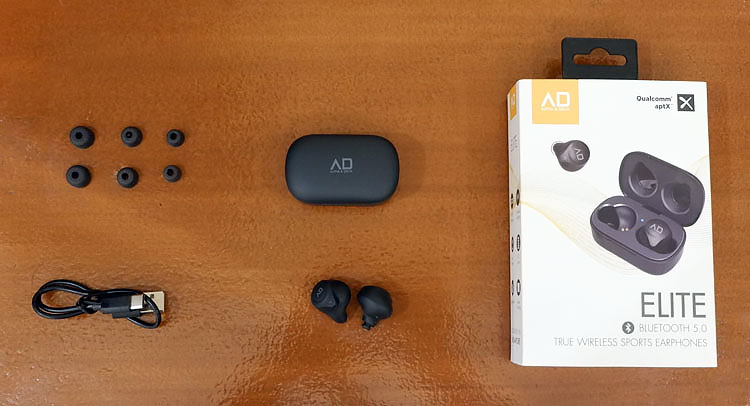The Sabbat Vooplay is a BT5.0 capable TWS featuring a 14.2mm biology fiber driver, aptX decoding, and wireless charging. It is priced at $69.99.
Disclaimer: The Sabbat Vooplay sent to us is a sample in exchange for our honest opinion. We thank the team at Linsoul for giving us this opportunity.
To read more about TWS products we have reviewed on Headfonics click here.
Note, this review follows our new scoring guidelines for 2021 which you can read up on here.
Sabbat is a company that has become familiar to many of us in recent years. Sabbat was established in 2016 as Sabbat Shenzhen Technology Development Co. Ltd., and have been producing Bluetooth earbuds for the Chinese market since 2017 with their first product, the X11 true wireless stereo earphone.
Their current product line is composed of the X12 ultra, the E12 ultra, and their latest addition, the Vooplay.
Tech Highlights
The Vooplay features a Qualcomm Bluetooth chipset, capable of Bluetooth 5.0, aptX, SBC, and of course AAC for apple users. The aptX codec allows the Vooplay to more reliably transmit hi-res audio at 16bit/48Khz. It also features Qualcomm’s cVc8.0 for clearer voice calls.
Each earbud is equipped with a 14.2mm bio fiber dynamic driver, which makes the driver larger than most other TWS earbuds. The charging case also allows for wireless charging of the case.
Design
While most TWS earbuds have an in-ear design, the Vooplay opted for an earbud design that doesn’t seal too well. Each earbud has a physical button that gives a satisfying click when being pressed, which makes it more reliable than most touch-based systems.
Aside from the earbuds themselves, the Vooplay also comes with a charging case. The case is coated with a faux leather finish that gives it that extra touch of class. The closing mechanism on the case also makes a satisfying click when it’s being closed.
When the earbuds are inside the charging case, the earbuds would sometimes get dislodged. This would result in your phone being connected to the earbuds accidentally.
It made me miss my alarm in the morning and drained the battery by the time that I wanted to use the earbuds. I would have wanted to see a more accurate magnet placement for the earbuds so that the earbuds would not be accidentally connected to my phone.
The rear of the case has a metal hinge, and it’s also good that Sabbat didn’t scrimp on the USB port as they used a type C port for the charging port of the case. The inside of the case also features 4 LEDs that indicate battery life.
This will make sure that the user would be informed of the amount of battery left in the case, and would remind you of charging at the appropriate times, something I haven’t seen at this price point until the Vooplay.
Comfort & Isolation
It seems that Sabbat took great care in ensuring the ergonomic design of the Vooplay. They are small enough that they remain comfortable, while still staying securely inside my ears even when I move around.
With the earbud design, the Vooplay would seem like it wouldn’t isolate too well, and in all honesty, it doesn’t. But this can be a good thing, depending on the use case. It seems that the Vooplay is designed to be used for everyday commutes, and it makes sure that we are still aware of our surroundings even when they are inside my ears. My wife can even talk to me while they are inside my ears.
The lack of sound isolation may worry some that it may detract from the listening experience. But based on my experience, the audio still came out clear despite the lack of isolation.
Controls
Inside the box, there’s a manual that clearly states the functions of the buttons and how to access them. Instructions are very clear, and it says that pressing either earbud once will play/pause the track, double-tapping the left earbud will select the previous track, while on the right will be the next track.
These controls are fairly standard, and wouldn’t pose much of a problem. My only issue with the controls is that they decided to implement volume controls by using triple taps. I’m not a fan of this, as this would be prone to errors, sometimes ending up just pausing the track or going to the next track/previous track instead.
Good thing that they implemented a tactile button instead of touch controls though, as this would give the user better feedback of whether the button was pressed or not.
Battery life
On the specs sheet, it says that the Vooplay is rated to last 6 hours on each charge, with an additional 3 full charges inside the charging case. In real-life testing, I found that the earbuds last around 7 hours, with an additional 3 full charges in the case.
The specs sheet commits that the Vooplay can be fully charged within 1 hour, and it was true both for the earbuds themselves, as well as the charging case.
When the earbuds are fully drained, they are ready for action in less than an hour, while the case would be fully charged in around 1hr and 15 mins. This would ensure that you wouldn’t have to do without your earbuds for too long even if they get fully drained.
The amount of battery that the Vooplay has is quite good, as it can easily outlast any cellphone. So I wouldn’t worry about being caught without earbuds throughout the day if you charge the Vooplay at the same time as when you charge your phone.
Packaging & Accessories
Since this is an earbud design, there are no ear tips to speak of. This made the package that came with the Vooplay a bit simpler than more of their competition. There’s an outer sleeve that clearly shows the color of the earbuds inside. The version that was sent to us was the Moss, which is this darker green color that gives it a touch of class.
The box that comes with the Vooplay is substantially thick and would protect the earbuds during transport and storage. Inside the box, there’s just the 2 earbuds, the charging case, a short charging cable, and a dust bag. It might seem simple when compared to other TWS earbuds, but that’s all you’ll need to get up and going.
Sound Impressions
Bass
One of the weaker points of the Vooplay presentation is the sub-bass region. When listening to the Vooplay, the sub-bass sounds rolled off a little early. TIn turn, this means the bass region doesn’t have a huge amount of power or body.
In the instrumental intro of 1973 by James Blunt, there’s a bass guitar groove that’s accompanied by a kick drum. When listening to the Vooplay, the kick drum doesn’t have the body that I’ve become accustomed to. The bass groove remained natural though, and it retained that fluid character.
The midbass region was an overall acceptable experience as it’s smooth enough, but the sub-bass region simply rolls of a bit too early which results in not being able to properly display some instruments such as kick drums.
Midrange
The vocal range on the Vooplay is quite good, where most of the vocal texture information remains clear. With Monsters by James Blunt, the vocal timbre and quality are accurate and very pleasing.
The lower registers of the piano were presented very well on the Vooplay. They make the piano sound very natural with the harmonic overtones being presented well. However, acoustic guitars end up sounding slightly thin. While electric guitars are a different story, with electric guitars as played on City Love by John Mayer, the guitars sound very full and rich.
The midrange is quite good on the Vooplay, not overly emphasized, but it still manages to create a natural overall timbre quality on most of what is presented in the midrange.
Treble
Treble is also not overly emphasized, giving it a good balance with the midrange, and ensuring that the harmonic overtones of each instrument would not be overly emphasized. Harmonic overtones of River flows in You by Yiruma tend to be slightly bright on most systems, but this is not the case with the Vooplay.
The treble is also presented with much detail, where cymbal hits from Fireflies by Owl City retain that distinct treble sparkle. While there is a good amount of treble sparkle, the cymbals don’t end up becoming too bright.
Overall, the treble was done to ensure that the treble would have a good balance with the midrange.
Staging
The Vooplay is a pair of earbuds, and as such, there isn’t much of a seal inside the ear canal. This gave the Vooplay a slight advantage in terms of imaging. When I listened to Bright by Echosmith, the Vooplay was giving me a good idea of the size of the room where the song was recorded.
The Vooplay also does a good job in terms of image directionality. The center image that the Vooplay creates is also slightly pushed forward to make it feel more natural overall.
While the Vooplay can give me a good idea of the size of the room, the soundstage overall feels quite small. It’s airy and not boxed in, but all the sound elements sound like they’re all happening inside my head. But the experience is quite good overall, as the Vooplay never felt closed in despite the smaller soundstage presentation.
Wireless Performance
Call Quality
With the availability of Qualcomm’s cVc8.0 on the Vooplay, it makes the call quality quite good. The other end of the line never complained of any external noise, even when I tried making a phone call with the earbuds directly in front of a fan.
The reception of the call was also clear, and there is no latency in the voice of the person on the other end of the line.
Stability
Connectivity on the Vooplay is also quite impressive. It was simple to set up, and connecting it for the first time to my Xiaomi Redmi Note 9 Pro was a straightforward process. Subsequent connections were also seamless, as taking them out of the charging case immediately initiated a connection with my device.
However, when the first earbud is returned, the handoff between the 2 earbuds will not be seamless. There will be a break in the connection between my phone and the Vooplay TWS earbuds, but the remaining earbud will automatically reconnect with my phone afterward.
Once in a while, there were isolated incidents that the connection would suddenly stutter. This, however, can easily be resolved by putting the earbuds back inside the case and removing them again to reinitiate a connection. This happens very rarely, so it’s not that bothersome for me.
Latency
While watching videos, I didn’t find any latency issues. The mouth was moving in sync with the audio. To further test this, I did a latency test, and there was barely any notable latency on the Vooplay, as the latency never went beyond 2mS.
The range of the connection is just as was promised in the specs sheet, and leaving my phone on my desk, and walking around within my house didn’t create any problems despite having 9” thick walls between my phone and the earbuds.
Select Comparisons
Coumi ANC 860
Technical
At first glance, the ANC 860 and the Vooplay may seem similar, because they both share that earbud design, but the ANC 860 cannot be used without the included proprietary ear tips. So the ANC 860 is more of an in-ear design, as opposed to Vooplay’s earbud design.
The charging case is also quite different between the 2, where the ANC860 has a larger case, and a leather strap that accentuates the plain black case. The Vooplay on the other hand has a faux leather coating that matches the color of the earbuds themselves.
The most glaring difference between the 2 though, is the number of LEDs that are inside the charging case. The Vooplay has 4 that indicate charge level, while the ANC860 simply has one that only indicates the charging status.
For controls, the ANC860 implements touch-based control while the Vooplay has a tactile button for controls. The Vooplay was simply a bit more accurate, because of the tactile feedback that the buttons provided.
Noise-canceling features are more prominently featured on the ANC860, as it’s implemented both in the voice calls and while listening to music or other media. Furthermore, the ANC860 has a transparency mode that would be useful when on the road.
The Vooplay only has noise-canceling to clear up my voice when making a call. Though the Vooplay does have a passive form of transparency due to the nature of it being a pair of earbuds there is no way to turn off the passive “transparency mode” on the Vooplay.
Performance
Tonality on the 2 TWS earbuds couldn’t be more different, the ANC860 tends to emphasize the bass region, while the Vooplay tends to roll off a little early. While the Vooplay’s midrange and treble region are balanced well, the ANC860 has a more rolled-off treble region. This gives the ANC860 a more unnatural instrumental timbre.
In terms of clarity, I could say that the Vooplay is a bit more resolving, especially in the bass region. The soundstage is about the same size on both, but the image directionality and tangibility are just a step above the ANC860.
While the 2 earbuds are priced about the same, the 2 earbuds made sacrifices in different areas. The ANC860 simply has more features, maybe except for the additional LEDs that the Vooplay has in the charging case. In terms of audio quality though, the Vooplay prioritized clarity and tonal balance, while the ANC860 has heaps of bass comparatively.
Alpha & Delta Elite
Technical
The Alpha & Delta Elite is slightly cheaper than the Vooplay, with its prices hovering around the $40 to $50 price point. While the Elite is more of an in-ear design, the Vooplay is an earbud design.
The charging of the 2 TWS systems are similar in size, but the Vooplay has a touch more class with the faux leather coating that it has. More importantly though is that the Vooplay has 4 LEDs that indicate the amount of battery left, while the Elite has a single LED to indicate charging level.
Both TWS earbuds have a similar placement issue as well though since I experienced being accidentally connected to the earbuds even when they are left inside the charging case.
The Elite has touch controls, and they were quite intuitive. Compared to the Vooplay, the Elite was slightly easier to use, because the volume control on the Elite is just a matter of holding either earbud to increase/decrease the volume. The Vooplay needed a triple-click to do this, and the system was just a bit too finicky and prone to overshooting.
Performance
Tonality on the Elite is also a stark contrast to what the Vooplay was designed to do. While the Vooplay was designed for a balanced midrange and treble region for natural instrumental timbre, the Elite is designed to have a thick and clean bass and midrange region. So treble on the Elite is recessed when compared to the Vooplay.
In terms of clarity though, the Vooplay and the Elite are more similar. While the Elite sounded slightly more boxed in, because of it being an in-ear design. Image directionality is a bit more accurate on the Vooplay, but not by a huge margin. Detail retrieval is about equal on the 2 earbuds though.
The 2 TWS systems are very similar, except maybe for what they ended up prioritizing in terms of tonality. Controls were slightly more accurate on the Elite, but I also liked how the Vooplay has 4 LEDs instead of just 1 on the Elite.
It would be much closer if it were a choice between the 2, and I believe it will be a choice between having a bass-focused tonality with the Elite or a more balanced treble-focused tonality on the Vooplay.
Our Verdict
The $69 price point for TWS earbuds is quite competitive, where numerous earbuds are popping out every week. With the Vooplay, Sabbat has added features that have not been seen before at this price point.
With 4 LEDs in the case, fast charging, and tactile controls while having an overall balanced tonality, the Vooplay is an interesting option as a budget-friendly TWS earbud that sounds refined.
Sabbat Vooplay Technical Specifications
- Qualcomm Bluetooth 5.0, APTX/ACC supported
- Wireless charging, long-lasting
- Unique color scheme, elegant and chic
- CVC 8.0 noise cancellation technology
- 14.2mm biology fiber driver
- Auto pair once take out, exchangeable principal and subordinate earbuds -40 hours playtime

